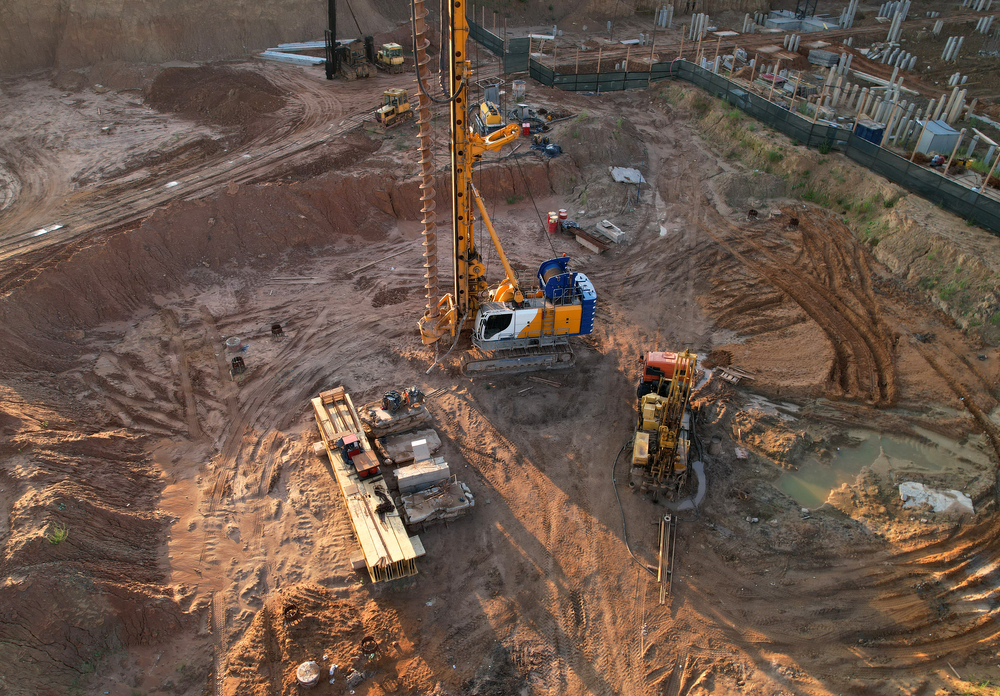The Ultimate Guide To Geotheta
The Ultimate Guide To Geotheta
Blog Article
Things about Geotheta
Table of ContentsNot known Facts About GeothetaThe Facts About Geotheta UncoveredThe smart Trick of Geotheta That Nobody is Talking AboutNot known Facts About GeothetaGeotheta Fundamentals Explained

They carry out site investigations, collect examples, perform research laboratory tests, and examine information to evaluate the suitability of the ground for construction tasks - Consulting Engineer. Based on their searchings for, geotechnical engineers give recommendations for structure style, slope security, keeping structures, and mitigation of geotechnical hazards. They team up with other experts, such as engineers, structural engineers, and construction groups, to make sure that geotechnical factors to consider are incorporated right into the total task style and execution
By analyzing the behavior and residential properties of dirt and rock, they can recognize prospective geotechnical threats such as landslides, dirt negotiation, or slope instability. Their knowledge assists protect against failings or accidents that might endanger lives and residential property. Right here are some in-depth responsibilities and duties of a geotechnical designer: Website Examination: Geotechnical designers conduct website investigations to collect data on subsurface problems.
They interpret the information to understand the residential or commercial properties and behavior of the dirt and rock, including their stamina, leaks in the structure, compaction attributes, and groundwater problems. Geotechnical Analysis and Layout: Geotechnical engineers examine the information accumulated throughout website investigations to assess the security and suitability of the site for construction jobs. They do geotechnical estimations and modeling to examine elements such as bearing ability, settlement, incline stability, side planet stress, and groundwater flow.
The Ultimate Guide To Geotheta
Structure Layout: Geotechnical designers play a vital duty in creating structures that can safely sustain the intended framework. They assess the dirt problems and tons demands to identify the proper structure type, such as superficial foundations (e.g., grounds), deep structures (e.g (https://moz.com/community/q/user/geotheta?_gl=1*xkyvtd*_up*MQ..*_ga*NjU0Mjk2NzIxLjE3MjI2MDU1Nzc.*_ga_DS7K9Q3S5W*MTcyMjYwNTU3Ni4xLjAuMTcyMjYwNTU3Ni4wLjAuMA..)., piles), or specialized methods like dirt renovation. They think about aspects such as settlement limitations, bearing capability, and soil-structure communication to create optimum structure layouts
They assess building strategies, monitor site tasks, and conduct area assessments to verify that the style recommendations are complied with. If unpredicted geotechnical problems emerge, they analyze the situation and provide recommendations for remediation or changes to the layout. Threat Evaluation and Reduction: Geotechnical engineers analyze geotechnical risks and risks related to the job website, such as landslides, liquefaction, or soil erosion.

Cooperation and Communication: Geotechnical engineers work carefully with other professionals entailed in a task, such as designers, architectural designers, and construction groups. Reliable communication and collaboration are important to incorporate geotechnical considerations into the total job design and building and construction process. Geotechnical designers supply technological proficiency, response questions, and guarantee that geotechnical demands are fulfilled.
About Geotheta
Right here are some sorts of geotechnical engineers: Foundation Designer: Structure engineers concentrate on designing and assessing foundations for frameworks. They assess the dirt problems, load requirements, and site attributes to establish the most proper foundation kind and layout, such as shallow structures, deep structures, or specialized methods like stack structures.
They review the variables affecting incline stability, such as soil residential or commercial properties, groundwater conditions, and slope geometry, and create strategies to avoid slope failures and mitigate risks. Quake Designer: Earthquake engineers concentrate on analyzing and creating frameworks to hold up against seismic pressures. They evaluate the seismic hazard of a site, review soil liquefaction potential, and establish seismic layout standards to make certain the security and resilience of frameworks throughout quakes.
They do field testing, accumulate examples, and evaluate the accumulated information to characterize the dirt homes, geologic developments, and groundwater problems at a site. Geotechnical Instrumentation Designer: Geotechnical instrumentation designers focus on tracking and measuring the actions of dirt, rock, and frameworks. They set up and maintain instrumentation systems that monitor variables such as dirt settlement, groundwater degrees, incline motions, and structural variations to evaluate efficiency and provide very early warnings of possible issues.
Geotheta - Truths
They carry out examinations such as triaxial examinations, consolidation tests, straight shear examinations, and permeability examinations to collect data for geotechnical analysis and style. Geosynthetics Designer: Geosynthetics designers concentrate additional resources on the design and application of geosynthetic products, such as geotextiles, geogrids, and geomembranes. They utilize these products to improve dirt security, strengthen inclines, give water drainage remedies, and control erosion.
They have a tendency to be investigatory people, which implies they're intellectual, reflective, and analytical. They are curious, systematic, sensible, logical, and logical. Some of them are likewise social, suggesting they're kind, charitable, participating, patient, caring, helpful, empathetic, tactful, and friendly. Does this sound like you? Take our totally free occupation examination to learn if geotechnical designer is just one of your top career suits.
In the office atmosphere, geotechnical engineers use specialized software application tools to do estimations, produce layouts, and examine data. They prepare reports, testimonial task specifications, interact with customers and team members, and coordinate project tasks. The workplace setting gives a helpful atmosphere for research, evaluation, and cooperation with other professionals involved in the job.
Facts About Geotheta Uncovered
They frequently go to task sites to perform site examinations, evaluate geotechnical problems, and collect data for analysis. These brows through involve traveling to different areas, occasionally in remote or challenging surfaces. Geotechnical engineers may execute dirt tasting, conduct examinations, and display construction activities to make sure that the geotechnical facets of the task are being executed properly.
Geotechnical designers likewise work in specialized geotechnical laboratories. Geotechnical laboratory designers work extensively in these environments, taking care of screening tools, operating instruments, and tape-recording information.
Report this page